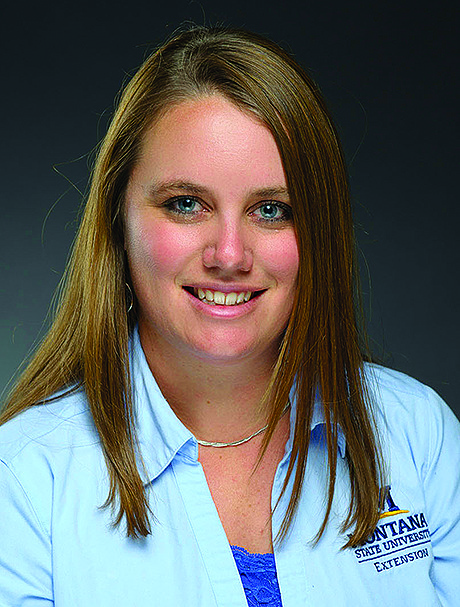Digging Into Soil Health: A Broad Overview
 | Author:
Allison Kosto, MSU Broadwater County Extension Agent
MSU Broadwater County Extension Agent |
Digging into Soil Health: A Broad Overview
Allison Kosto
MSU Broadwater County Extension Agent
Scientists have studied soil for decades trying to understand the complexities of soil sustainability, conservation and plant growth. During the 2000s, a new term “soil health” emerged as an effort to define the critical importance of soil to maintain a healthy productive environment. The USDA Natural Resource Conservation Service (NRCS) was one of the first to put a formal definition to soil health as “The continued capacity of soil to function as a vital living ecosystem that sustains plants, animals and humans.” With this new terminology, the concept of healthy soils has gained traction in the agricultural community and has even had carryover into home gardens. However, soil health is a complex topic that can be hard to dissect and decide which techniques to put into practice.
This is a three-part series that will dig into soil health. In this article, we’ll look at soil health broadly. The next article will focus on applying soil health principles in agriculture systems and the last article will provide strategies to improve soil health for home gardeners.
Why are healthy soils important? The benefits of healthy soil are endless. Ultimately, healthy soil creates a more robust ecosystem and sustainable and profitable cropland or rangeland. Specifically, healthy soils have increased water-holding capacity, higher organic matter, less erosion, more earthworms, improved nutrient retention and cycling, less pest issues and more. Additionally, proponents of soil health also suggest that best practices for soil health means less tillage, decreased fuel costs for equipment, less fertilizer and increased crop yields.
Soil has many characteristics that cannot be changed or cannot be changed significantly. This includes texture, parent material and soil formation factors such as climate and topography. These characteristics create a baseline for what you can or cannot do. For example, if you have to start with a gravelly clay soil, you have a lot more work to do and may have limitations based on the soil type. However, if you start with a fertile loam then you may have more flexibility to build a soil that can meet your needs.
Soil is home to a collection of organisms that are often called the soil food web. These organisms live all or part of their lives in the soil. Microorganisms include bacteria, fungi, actinomycetes and protozoa. Larger organisms include millipedes, springtails, mites, fly larvae, nematodes and burying beetles. They all play a critical role in soil function through aiding in the decomposition of organic matter, nutrient cycling and structure development. Organic matter serves as the primary resource to supply energy and nutrients for plants and organisms. Without organic matter, soil organisms would be minimal or non-existent. This also means that there may be an increased requirement for fertilizer to supply nutrients to plants.
Plants require water and oxygen to survive. Soil plays a critical role in providing space for both water and air which is held in pore spaces between the soil particles. The size of the pores influences how water and gases move and is held in the soil. The larger pores are called macropores and the smaller pores are called micropores. Macropores which can be seen by the naked eye are important for aeration and water infiltration. Micropores help absorb and hold water. A combination of both is needed in a healthy soil. Pores form when soil particles clump together to form aggregates.
This brief description of the complexities of soil doesn’t even scratch the surface (pun intended). Soil truly creates the foundation for our ecosystem and food production chain. Paying attention to what goes into the ground and how your soil responds to your management practices is critical. Stay tuned for the next two weeks on how to apply these principles to improve soil health in cropping systems and gardens.
If you have questions, stop by your local MSU Extension Office at 416 Broadway or contact us at 406-266-9242 or allison.kosto@montana.edu.